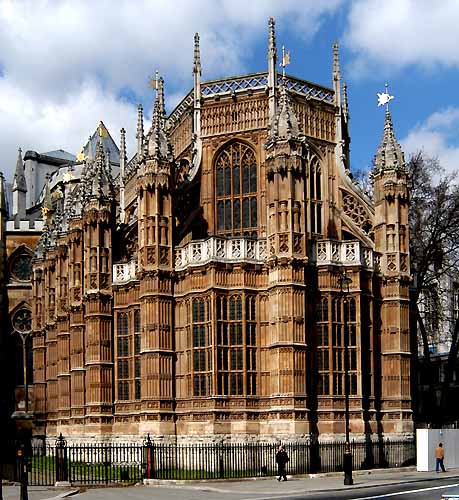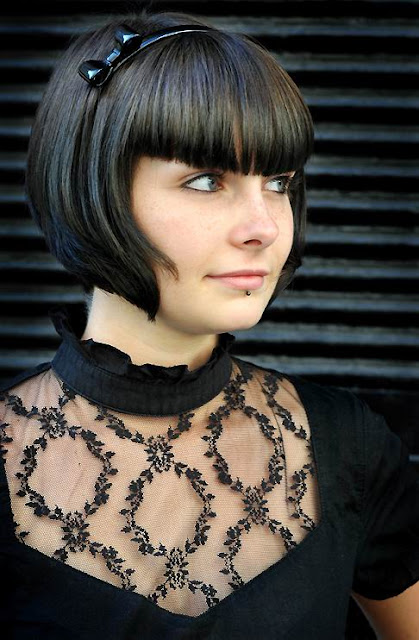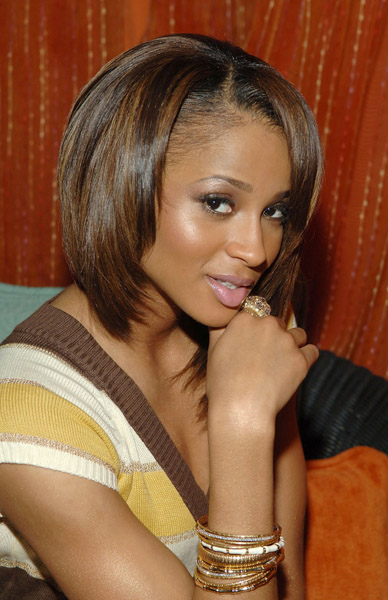Sunday, November 21, 2010
Sunday, November 14, 2010
The Female Gothic
When Ellen Moers wrote of the "Female Gothic" in Literary Women in 1977, she coined a new term and a laid the foundation for a new way of thinking about women and the Gothic genre. Certainly, generically gendered distinctions had been made before Moers' book; eight years earlier, Hume had distinguished between "the novel of terror" and "the novel of horror," positing Ann Radcliffe's books as epitomizing the former and M.G. Lewis' the latter. Hume, however, focused his piece on the male-dominated horror-gothic, dismissing Radcliffe and her many emulators as "not serious." This dismissal has since been rectified by a flood of critical attention to both the Gothic genre itself and the female authors within the Gothic tradition, but that flood has produced its own questions. What specifically differentiates between the "Female Gothic" and other kinds of Gothic? From other kinds of novels? Can we read "Female" as "Feminist," or do these novels simply reproduce the patriarchal structures their heroines inevitably struggle against? Is the Female Gothic somehow "personal"? Political? Psychological? And in the final count, to borrow from Jane Tompkins' famous question, is the Female Gothic any good?
In Literary Women, Moers claims that the Female Gothic is "easily defined: the work that women writers have done in the literary mode that, since the eighteenth century, we have called the Gothic" (Moers, 90). In answering the many questions raised by the spectre of the Female Gothic, I want to complicate that definition by including in its the depiction of women in the Gothic, as well as the depiction of the men in Gothic novels, who inevitably either marry those women or try to kill them, or possibly both. Moreover, because Radcliffe and Lewis (the defining authors of the 18th-century Gothic) were intentionally reacting to each other's work and incorporated that reaction into their novels, I also include Lewis' depiction of heroines and heroes in my definition of the Female Gothic.
This section is constructed to give the student of the Gothic a strong textual and critical introduction to the major issues that play themselves out in the politics of being a female (writer and character) in the 18th-century Gothic. Because so much of these gender politics are founded in the works of Radcliffe and Lewis, I have limited the discussion to their works. Specifically, the section investigates four aspects of the Female Gothic in the Radcliffean and Lewisian traditions: the gendered construction of the Gothic heroine; the similarly gendered construction of the Gothic hero; the link between the Gothic "place" and female sexuality; and the conflation of money/class issues with issues of femininity The last unit is devoted solely to Mary Shelley's Frankenstein, for it, too, demonstrates a version of the Female Gothic in the issues it raises, but takes these issues in an entirely new direction.
While this section is certainly not a comprehensive overview of the Female Gothic, it should provide clear direction to readers interested in the constitution of femininity and gender politics in the genre. A bibliography of critical works consulted is available from the Gothic: Materials For Study homepage.
In Literary Women, Moers claims that the Female Gothic is "easily defined: the work that women writers have done in the literary mode that, since the eighteenth century, we have called the Gothic" (Moers, 90). In answering the many questions raised by the spectre of the Female Gothic, I want to complicate that definition by including in its the depiction of women in the Gothic, as well as the depiction of the men in Gothic novels, who inevitably either marry those women or try to kill them, or possibly both. Moreover, because Radcliffe and Lewis (the defining authors of the 18th-century Gothic) were intentionally reacting to each other's work and incorporated that reaction into their novels, I also include Lewis' depiction of heroines and heroes in my definition of the Female Gothic.
This section is constructed to give the student of the Gothic a strong textual and critical introduction to the major issues that play themselves out in the politics of being a female (writer and character) in the 18th-century Gothic. Because so much of these gender politics are founded in the works of Radcliffe and Lewis, I have limited the discussion to their works. Specifically, the section investigates four aspects of the Female Gothic in the Radcliffean and Lewisian traditions: the gendered construction of the Gothic heroine; the similarly gendered construction of the Gothic hero; the link between the Gothic "place" and female sexuality; and the conflation of money/class issues with issues of femininity The last unit is devoted solely to Mary Shelley's Frankenstein, for it, too, demonstrates a version of the Female Gothic in the issues it raises, but takes these issues in an entirely new direction.
While this section is certainly not a comprehensive overview of the Female Gothic, it should provide clear direction to readers interested in the constitution of femininity and gender politics in the genre. A bibliography of critical works consulted is available from the Gothic: Materials For Study homepage.
When Ellen Moers wrote of the "Female Gothic" in Literary Women in 1977, she coined a new term and a laid the foundation for a new way of thinking about women and the Gothic genre. Certainly, generically gendered distinctions had been made before Moers' book; eight years earlier, Hume had distinguished between "the novel of terror" and "the novel of horror," positing Ann Radcliffe's books as epitomizing the former and M.G. Lewis' the latter. Hume, however, focused his piece on the male-dominated horror-gothic, dismissing Radcliffe and her many emulators as "not serious." This dismissal has since been rectified by a flood of critical attention to both the Gothic genre itself and the female authors within the Gothic tradition, but that flood has produced its own questions. What specifically differentiates between the "Female Gothic" and other kinds of Gothic? From other kinds of novels? Can we read "Female" as "Feminist," or do these novels simply reproduce the patriarchal structures their heroines inevitably struggle against? Is the Female Gothic somehow "personal"? Political? Psychological? And in the final count, to borrow from Jane Tompkins' famous question, is the Female Gothic any good?
In Literary Women, Moers claims that the Female Gothic is "easily defined: the work that women writers have done in the literary mode that, since the eighteenth century, we have called the Gothic" (Moers, 90). In answering the many questions raised by the spectre of the Female Gothic, I want to complicate that definition by including in its the depiction of women in the Gothic, as well as the depiction of the men in Gothic novels, who inevitably either marry those women or try to kill them, or possibly both. Moreover, because Radcliffe and Lewis (the defining authors of the 18th-century Gothic) were intentionally reacting to each other's work and incorporated that reaction into their novels, I also include Lewis' depiction of heroines and heroes in my definition of the Female Gothic.
This section is constructed to give the student of the Gothic a strong textual and critical introduction to the major issues that play themselves out in the politics of being a female (writer and character) in the 18th-century Gothic. Because so much of these gender politics are founded in the works of Radcliffe and Lewis, I have limited the discussion to their works. Specifically, the section investigates four aspects of the Female Gothic in the Radcliffean and Lewisian traditions: the gendered construction of the Gothic heroine; the similarly gendered construction of the Gothic hero; the link between the Gothic "place" and female sexuality; and the conflation of money/class issues with issues of femininity The last unit is devoted solely to Mary Shelley's Frankenstein, for it, too, demonstrates a version of the Female Gothic in the issues it raises, but takes these issues in an entirely new direction.
While this section is certainly not a comprehensive overview of the Female Gothic, it should provide clear direction to readers interested in the constitution of femininity and gender politics in the genre. A bibliography of critical works consulted is available from the Gothic: Materials For Study homepage.
In Literary Women, Moers claims that the Female Gothic is "easily defined: the work that women writers have done in the literary mode that, since the eighteenth century, we have called the Gothic" (Moers, 90). In answering the many questions raised by the spectre of the Female Gothic, I want to complicate that definition by including in its the depiction of women in the Gothic, as well as the depiction of the men in Gothic novels, who inevitably either marry those women or try to kill them, or possibly both. Moreover, because Radcliffe and Lewis (the defining authors of the 18th-century Gothic) were intentionally reacting to each other's work and incorporated that reaction into their novels, I also include Lewis' depiction of heroines and heroes in my definition of the Female Gothic.
This section is constructed to give the student of the Gothic a strong textual and critical introduction to the major issues that play themselves out in the politics of being a female (writer and character) in the 18th-century Gothic. Because so much of these gender politics are founded in the works of Radcliffe and Lewis, I have limited the discussion to their works. Specifically, the section investigates four aspects of the Female Gothic in the Radcliffean and Lewisian traditions: the gendered construction of the Gothic heroine; the similarly gendered construction of the Gothic hero; the link between the Gothic "place" and female sexuality; and the conflation of money/class issues with issues of femininity The last unit is devoted solely to Mary Shelley's Frankenstein, for it, too, demonstrates a version of the Female Gothic in the issues it raises, but takes these issues in an entirely new direction.
While this section is certainly not a comprehensive overview of the Female Gothic, it should provide clear direction to readers interested in the constitution of femininity and gender politics in the genre. A bibliography of critical works consulted is available from the Gothic: Materials For Study homepage.
Labels:
Female Gothic
Gothic Revival in Europe and Britain
Most analyses of the nineteenth-century Gothic revival in architecture have treated it as an essentially English phenomenon. This work is one of the few to consider the important parallel developments in Europe and thus set the movement in proper international perspective.
One interesting aspect of the Gothic revival is its development in notably different national ways. Dr. Germann examines the semantics of "Gothic" and "style" in Italian, French, and English and shows how each country's concept of style influenced the choice of particular Gothic modes and forms. In England the Gothic revival went hand in hand with liturgical revivals. French art historians saw the renewal of the Gothic style as a nationalistic tribute to a golden age in France's history. The Germans welcomed it as an opportunity for practical craft training. Contributions to the three key architectural journals of this period—The Ecclesiologist, the Annales archéologiques, and the Kölner Domblatt—are examined as evidence of the spirit behind the work.
No understanding of the Gothic revival would be complete without also putting it into historical perspective. Dr. Germann examines the events leading up to the Gothic revival, its beginnings, doctrinal aspects, eventual decline, and, finally, historical significance. His analysis looks forward to Gaudí and the Bauhaus as well as back to Vitruvius.
Although this book focuses primarily on the ideas of the period, rather than on specific works of architecture, there are 98 illustrations, including drawings and plans, depicting some of the principal buildings. There are also extensive footnotes and a thematic bibliographical index.
One interesting aspect of the Gothic revival is its development in notably different national ways. Dr. Germann examines the semantics of "Gothic" and "style" in Italian, French, and English and shows how each country's concept of style influenced the choice of particular Gothic modes and forms. In England the Gothic revival went hand in hand with liturgical revivals. French art historians saw the renewal of the Gothic style as a nationalistic tribute to a golden age in France's history. The Germans welcomed it as an opportunity for practical craft training. Contributions to the three key architectural journals of this period—The Ecclesiologist, the Annales archéologiques, and the Kölner Domblatt—are examined as evidence of the spirit behind the work.
No understanding of the Gothic revival would be complete without also putting it into historical perspective. Dr. Germann examines the events leading up to the Gothic revival, its beginnings, doctrinal aspects, eventual decline, and, finally, historical significance. His analysis looks forward to Gaudí and the Bauhaus as well as back to Vitruvius.
Although this book focuses primarily on the ideas of the period, rather than on specific works of architecture, there are 98 illustrations, including drawings and plans, depicting some of the principal buildings. There are also extensive footnotes and a thematic bibliographical index.
Most analyses of the nineteenth-century Gothic revival in architecture have treated it as an essentially English phenomenon. This work is one of the few to consider the important parallel developments in Europe and thus set the movement in proper international perspective.
One interesting aspect of the Gothic revival is its development in notably different national ways. Dr. Germann examines the semantics of "Gothic" and "style" in Italian, French, and English and shows how each country's concept of style influenced the choice of particular Gothic modes and forms. In England the Gothic revival went hand in hand with liturgical revivals. French art historians saw the renewal of the Gothic style as a nationalistic tribute to a golden age in France's history. The Germans welcomed it as an opportunity for practical craft training. Contributions to the three key architectural journals of this period—The Ecclesiologist, the Annales archéologiques, and the Kölner Domblatt—are examined as evidence of the spirit behind the work.
No understanding of the Gothic revival would be complete without also putting it into historical perspective. Dr. Germann examines the events leading up to the Gothic revival, its beginnings, doctrinal aspects, eventual decline, and, finally, historical significance. His analysis looks forward to Gaudí and the Bauhaus as well as back to Vitruvius.
Although this book focuses primarily on the ideas of the period, rather than on specific works of architecture, there are 98 illustrations, including drawings and plans, depicting some of the principal buildings. There are also extensive footnotes and a thematic bibliographical index.
One interesting aspect of the Gothic revival is its development in notably different national ways. Dr. Germann examines the semantics of "Gothic" and "style" in Italian, French, and English and shows how each country's concept of style influenced the choice of particular Gothic modes and forms. In England the Gothic revival went hand in hand with liturgical revivals. French art historians saw the renewal of the Gothic style as a nationalistic tribute to a golden age in France's history. The Germans welcomed it as an opportunity for practical craft training. Contributions to the three key architectural journals of this period—The Ecclesiologist, the Annales archéologiques, and the Kölner Domblatt—are examined as evidence of the spirit behind the work.
No understanding of the Gothic revival would be complete without also putting it into historical perspective. Dr. Germann examines the events leading up to the Gothic revival, its beginnings, doctrinal aspects, eventual decline, and, finally, historical significance. His analysis looks forward to Gaudí and the Bauhaus as well as back to Vitruvius.
Although this book focuses primarily on the ideas of the period, rather than on specific works of architecture, there are 98 illustrations, including drawings and plans, depicting some of the principal buildings. There are also extensive footnotes and a thematic bibliographical index.
Labels:
Gothic in Europe and Britain
Subscribe to:
Posts (Atom)















